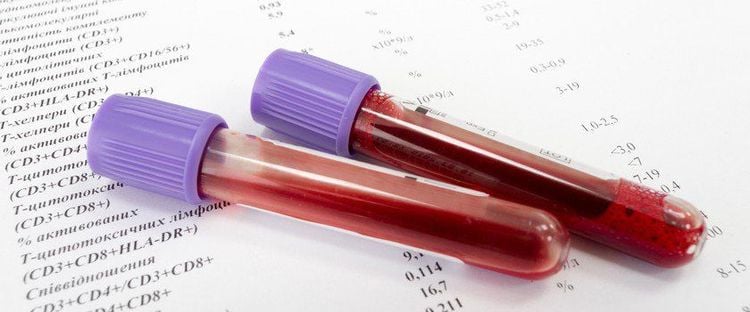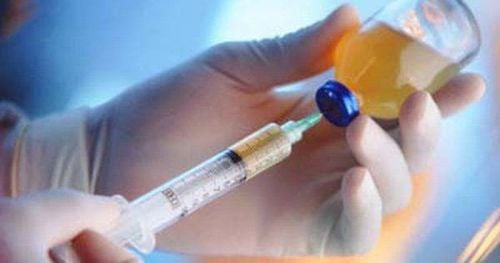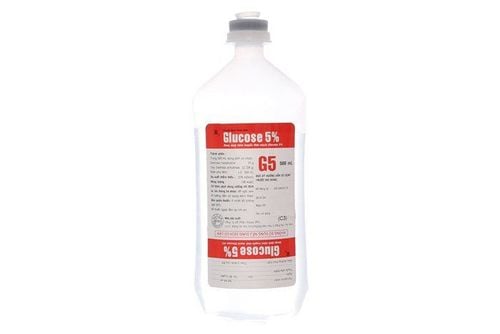This is an automatically translated article.
The article was professionally consulted by Doctor Vo Ha Bang Suong - Doctor of Medicine - Department of Medical Examination & Internal Medicine - Vinmec Phu Quoc International General Hospital. The doctor has more than 15 years of experience in the treatment of internal diseases.Osmolality is the term used to describe the osmolality of a fluid. Blood osmolality or “useful” blood osmolality measures the number of osmotically active particles (ions or molecules) in plasma. This is a useful test to assess for water and electrolyte imbalances and to determine the body's fluid needs.
The patient's fluid status. Concentration of urine. Status of antidiuretic hormone (ADH) secretion. When talking about blood osmolality, it is important to note some of the following conceptual terms:
Blood osmolality or useful blood osmolality is the concentration of a fluid that is osmotic when it is measured in osmoles or milliosmol for 1000g of solute. Soluble substances that affect serum osmolality include sodium, bicarbonate, protein, and glucose. Blood osmolality is measured by either point de-icing or water vapor pressure. The effective serum osmolality is controlled in part by vasopressin (ADH) produced in the hypothalamus. Blood osmolality or blood osmolality is the concentration of an osmotic fluid when it is measured in units of osmoles or milliosmoles per 1000 ml of fluid. Under normal conditions, the useful blood osmolality will be higher than the blood osmolality because the volume of water present in 1 liter of plasma is only 940ml, the rest is proteins.
Formula to estimate clinical plasma osmolality:
Estimated osmolality = blood sodium concentration (mmol/L) x 2 + blood urea concentration (mmol/L) + blood glucose concentration (mmol/L).
See also: Dehydration in increased blood osmolality
1. Purpose of blood osmolality test
Assess the patient's epidemic status to have additional orientation and appropriate treatment. Assess the patient's urine for concentration. Assess the state of antidiuretic hormone ADH secretion. Diagnostic orientation of the cause of hyponatremia. Diagnosis of diseases related to blood osmolality disorders such as seizures, methanol poisoning...
Độ thẩm thấu máu giúp chẩn đoán các tình trạng mất cân bằng nước và điện giải trong cơ thể
2. Clinical significance of blood osmolality test index
This is a useful test in assessing urine concentration. Normally, the kidneys excrete urine that is three times more concentrated than plasma. Comparison of plasma osmolality with urinary osmolality allows the assessment of concentrated renal function. Blood osmolality test is an indispensable test when doing bilan in the diagnosis of hyponatremia. This result allows the diagnosis of hyponatremia due to urinary sodium loss or blood dilution. Normal index of blood osmolality: 280 - 296 mosm/Kg H2O or 280 - 296 mmol/Kg H2O. Increased serum osmolality will worsen the clinical picture:385 mOsm/Kg H2O => worsening condition in hyperglycemic patients. 400 mOsm/Kg H2O => generalized convulsions appear. 420 mOsm/Kg H2O death. Clinically, test results are not always completely accurate. Test results can be changed by a number of factors such as:
Incorrect collection and storage of specimens leads to broken red blood cells, affecting test results. Because the patient is taking drugs such as corticosteroids or osmotic diuretics. The useful blood osmolality index can be increased or decreased depending on the individual patient case.

Xét nghiệm độ thẩm thấu máu là việc làm cần thiết trong việc chẩn đoán hạ natri máu
3. Causes of changes in blood osmolality index:
3.1. Causes of increased blood osmotic pressure
Due to hypernatremia: Hypernatremia with dehydration seen in fever, dehydrated diarrhea, vomiting or diabetes insipidus... Hypernatremia with normal fluid status in patients with impaired thirst , primary or idiopathic hypernatremia. Hypernatremia with increased fluid load: mainly due to medication or trauma. Patients with metabolic diseases such as: acidosis, increased blood nitrogen levels in uremia syndrome, increased blood calcium levels, increased blood glucose levels, hypokalemia or ketoacidosis... Patients with convulsions or severe liver disease. Patients with shock, trauma, poisoning (common in ethylene glycol poisoning or methanol poisoning). Patients with diabetes mellitus, edema or severe burns. In addition, blood osmolality may be increased in people whose diets are high in protein.
Chế độ ăn chứa nhiều protein cũng có thể làm tăng độ thẩm thấu máu
3.2. Causes of decreased blood osmolality
Due to hyponatremia in hypovolaemia. Having some adrenal gland diseases such as addison's disease, congenital adrenal hypoplasia, adrenal bleeding or inappropriate steroid dose reduction... Due to renal salt loss such as increased osmotic diuresis, tubular acidosis Proximal stroke, polycystic kidney disease, pyelonephritis or urinary tract obstruction... Due to blood thinning in diseases such as edema, congestive heart failure, cirrhosis of the liver, ascites, syndromes of inappropriate ADH secretion , nephrotic syndrome or patients after surgery... In addition, it can be caused by vomiting, diarrhea, burns or peritonitis... In summary, blood osmolality is one of the important tests. , has clinical diagnostic value to assist in the diagnosis of the cause of hyponatremia or disorders of blood osmolality. Test results can be affected by many different factors, so the testing process needs to be carried out according to the correct procedure and to ensure all factors are correct.Vinmec International General Hospital is one of the hospitals that not only ensures professional quality with a team of leading medical doctors, modern equipment and technology, but also stands out for its examination and consultation services. comprehensive and professional medical consultation and treatment; civilized, polite, safe and sterile medical examination and treatment space. Customers when choosing to perform tests here can be completely assured of the accuracy of test results.
Customers can directly go to Vinmec Health system nationwide to visit or contact the hospital hotline for support.
Please dial HOTLINE for more information or register for an appointment HERE. Download MyVinmec app to make appointments faster and to manage your bookings easily.













